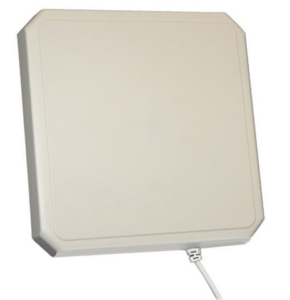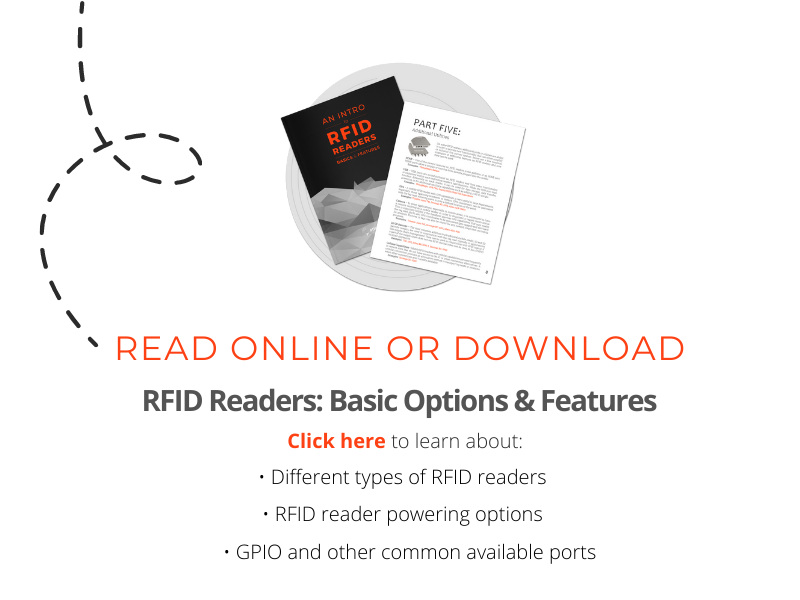RFID in Motion: High-Speed Applications
Introduction
Tracking items at high speeds using RFID can be challenging, and applications that do so can be much more complex to deploy than typical RFID applications. Below are some common questions and answers regarding high-speed applications.
Why is it difficult to track items at high speeds?
The challenge lies in keeping the RFID tag in the read zone long enough for the antenna to both energize the tag AND receive the tag’s reply. The main issue is the UHF RFID tag must be energized first and foremost before it sends information back to the reader. While this is done typically in milliseconds, many times tags are moving too fast and will leave the read zone before successfully sending the reply.
Can high-speed applications be successful?
Yes, but the sheer number of variables that must be tested may be time consuming and the definition of success could change throughout the testing process. Just like any RFID application, testing is key here. While some applications may work well with one reader/antenna setup, others will need multiple antennas or reader/antenna combinations in order to get the desired read rate.
What setup should I use for a high-speed RFID application?
Below are three possible setups for high-speed applications. None of these setups are guaranteed to produce results; rather, they are general recommendations in order to start planning and testing for high-speed applications.
1. One Reader, Multiple Antennas. The key in setting up a high-speed application with one reader and multiple antennas is the spacing between the antennas. The goal is to setup a perfectly spaced read zone so that the first antenna sends a signal and energizes the tag, and the second or third antenna in line can receive the response.
Potential Issue: Readers transmit power to only one antenna at any given time. Although the cycle time is very quick (usually about 100 milliseconds per antenna), there is a possibility that the reader might be sending power to the "wrong" antenna when the item is passing.
2. Multiple Readers, Multiple Antennas. This setup addresses the potential issue of setup one above by using multiple readers with one antenna attached to each, ensuring that the power is sent to the right antenna at the right time. In this setup, one reader/antenna combination will energize the RFID tag, and the next reader/antenna setup can receive the backscattered reply.
Potential Issue: Higher cost for multiple reader setups.
3. One Reader, One or More Antennas, BAP Tags. Battery-assist passive (BAP) tags can help to make a high-speed application successful because the tags do not have to wait to be energized in order to send the reply. Because these tags have their own energy supply (in the form of a battery), they can simply receive the signal and send back the reply – eliminating a major step and saving milliseconds.
Potential Issue: BAP RFID tags are expensive relative to traditional passive RFID tags. If the application requires many BAP tags, then the total investment can add up quickly.
What are some key elements to consider when setting up a high-speed application?
Reading a tagged object moving at high speeds requires thorough testing. Below are some things to keep in mind when planning a setup.

What are some things to consider about tags?
SOAP – Size, Orientation, Angle, Placement of RFID tags is important for every application. For more information on tag SOAP, read 6 Factors That Affect Read Range.
Key Takeaway: The better the antenna can “see” the tag and send energy directly to the tag’s face, the more likely you’ll be able to read the tag.
Data – The less data a tag transmits, generally, the quicker the reader will receive the tag’s information. Even a millisecond reduction in communication time could help these applications perform better.
Key Takeaway: Stick with using the tag’s 96 bit EPC number and avoid accessing the User Memory data.
Surface material – Like most applications, the material of the tagged items (metal, plastic, wood, etc.) must be taken in consideration when deciding which tag to use. Diminished read range from choosing a tag that is not optimized for the item’s surface material could mean no reads at all.
Key Takeaway: Narrow your selection to a handful of RFID tags based upon the tagged surface, then complete thorough testing to determine which tag(s) provide the necessary read range.
Type – After surveying the environment, does the RFID tag need to be rugged or weather resistant? If a non-weather resistant tag gets wet, the tag may detune and not be able to read successfully.
Key Takeaway: If a weather resistant tag is needed, choose a hard RFID tag with an IP rating of 67 or higher.

What are some things to consider about readers?
Type – High-performance readers are a necessity in high speed applications because they have faster processing and performance.
Key Takeaway: Choose an RFID reader with the ability to process at least 500+ tag reads per second.
IP Rating - After surveying the environment, does the reader need to be weather resistant? Generally, readers and antennas are not weatherproof by themselves, but adding a weatherproof enclosure could allow the application to be outdoors.
Key Takeaway: If needed, use a weatherproof enclosure to protect the reader.
Amount – Do you need more than one reader to create the read zone? The amount needed for this application depends on the selected setup.
Key Takeaway: Test first with the more cost-effective option of one reader and multiple antennas. If that doesn’t work, then add additional readers and antennas (as needed) as you continue testing.

What are some things to consider about antennas?
Location -
Location of the antenna in relation to the tag – Like other applications, make sure that the tag is within the read range of the antenna. The farther apart the antenna and tag, the farther the energy and signal must travel. The farther the energy travels, the less energy gets to the tag.
Key Takeaway: Generally speaking, the closer the antenna is to the RFID tag the better chance it will have to communicate with it. Place the antennas where they are well-protected from impact, yet as close to the RFID tag as possible.
Location of the antenna in relation to another antenna (if available) – The amount of space between antennas could be the difference between a successful or unsuccessful high-speed RFID application. If the antennas are the ideal width apart, one can send the signal while the other receives it. Testing is key here.
Key Takeaway: To lower the cost of deployment, begin testing with as few antennas as possible in order to achieve the desired read rates. Thoroughly test the spacing between antennas before adding additional antennas.
Gain – The antenna gain should be medium or high gain in order to get as much energy to the RFID tag as possible.
Key Takeaway: Select an antenna with a gain of 6 dB or higher.
Polarization – If the tag location is known and constant, a linearly polarized antenna will work very well for this type of application because they typically have a higher gain and more focused radiation pattern. If the tag location is not known or constant, a circularly polarized antenna should be used.
Key Takeaway: If you cannot predict the exact location of the RFID tag every time, select a circularly polarized antenna.
Amount – The number of antennas to use will depend on the chosen setup.
Key Takeaway: As mentioned above, to lower the cost of deployment, begin testing with as few antennas as possible in order to achieve the desired read rates. Thoroughly test before adding additional antennas.
Angle – The angle of the antenna will be an important aspect to test in any high-speed application. Experiment with positioning an antenna at various angles towards the incoming tagged item. If there are additional antennas, experiment with various angles, including one positioned towards the tagged item as it is moving away.
Key Takeaway: Experiment with multiple angles for each antenna used in order to create the ideal read zone.
Type – Indoor vs. Outdoor – As with any RFID application, use an antenna rated for outdoor use if the application will be outdoors.
Key Takeaway: if the application is outside, use an antenna rated IP 67 or higher.

What are some things to consider about the general setup?
Cable Loss – For difficult applications like this one or applications in need of long read range, the amount of energy sent to the tag should be as much as possible (while staying within regulatory guidelines). Two major sources of energy loss in an RFID system are loss as energy travels the length of the coaxial cable from the RFID reader to the antenna (and back) and loss as energy travels through the air between the antenna and RFID tag.
Key Takeaway: To limit energy lost, use the shortest cable possible for your application along with the proper insulation rating. For more information on cable loss (and combating it) check out our guide.
Environment – Any metal or water in the environment could cause multipath effects that cause stray reads and null zones.
Key Takeaway: For more information on what to avoid and how to mitigate it, check out our blog post on Environmental Factors.
Width/Height of read zone – Make sure to account for the width and height of the read zone to ensure that the antenna(s) provide proper coverage for the tagged object.
Key Takeaway: For a taller read zone, antennas can be placed on tripods or posts and stacked vertically to ensure complete coverage. The same concept applies for wider read zones.
Speed – After testing, you’ll find that reading RFID tags at certain speeds will be, unfortunately, unattainable. Check out some other RFID high-speed applications around the world to get a feel for speeds that allow for working RFID systems.
Tracking Motorcycles: https://www.rfidjournal.com/articles/view?4063/2
Tracking Cars: https://www.rfidjournal.com/articles/view?1078
Tracking Railcars: https://www.rfidjournal.com/articles/view?9712/
Conclusion
For more information on high-speed applications, contact us or comment below.
For more information on all things RFID, check out our RFID resources page and our YouTube channel.

